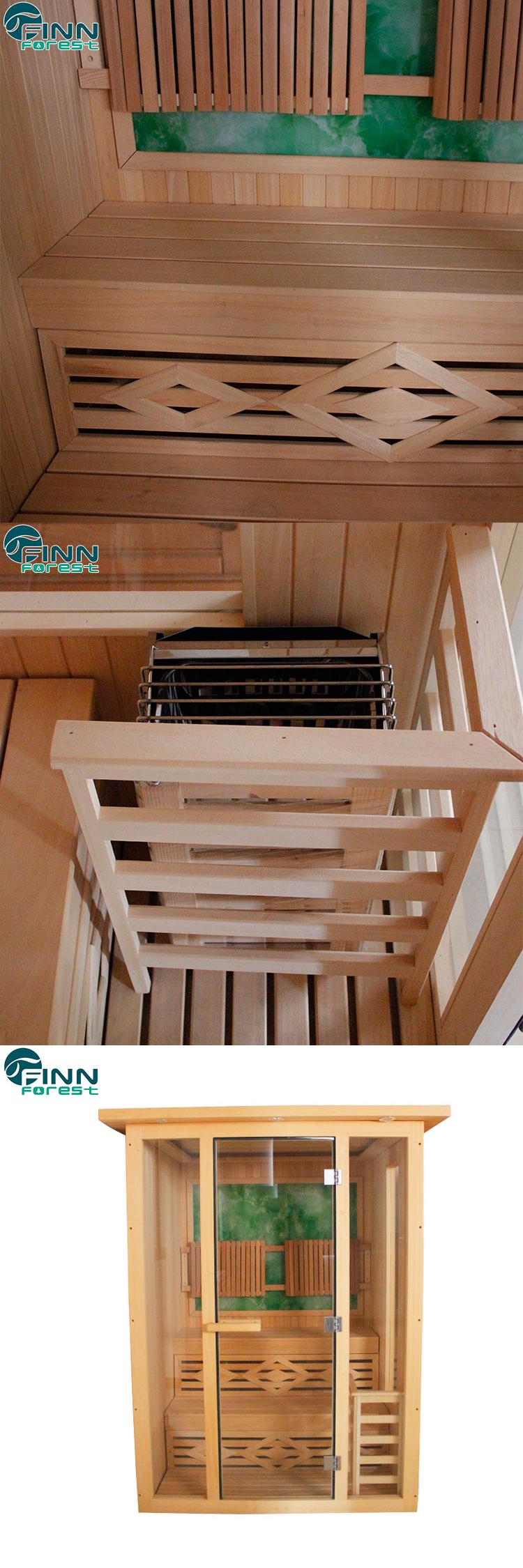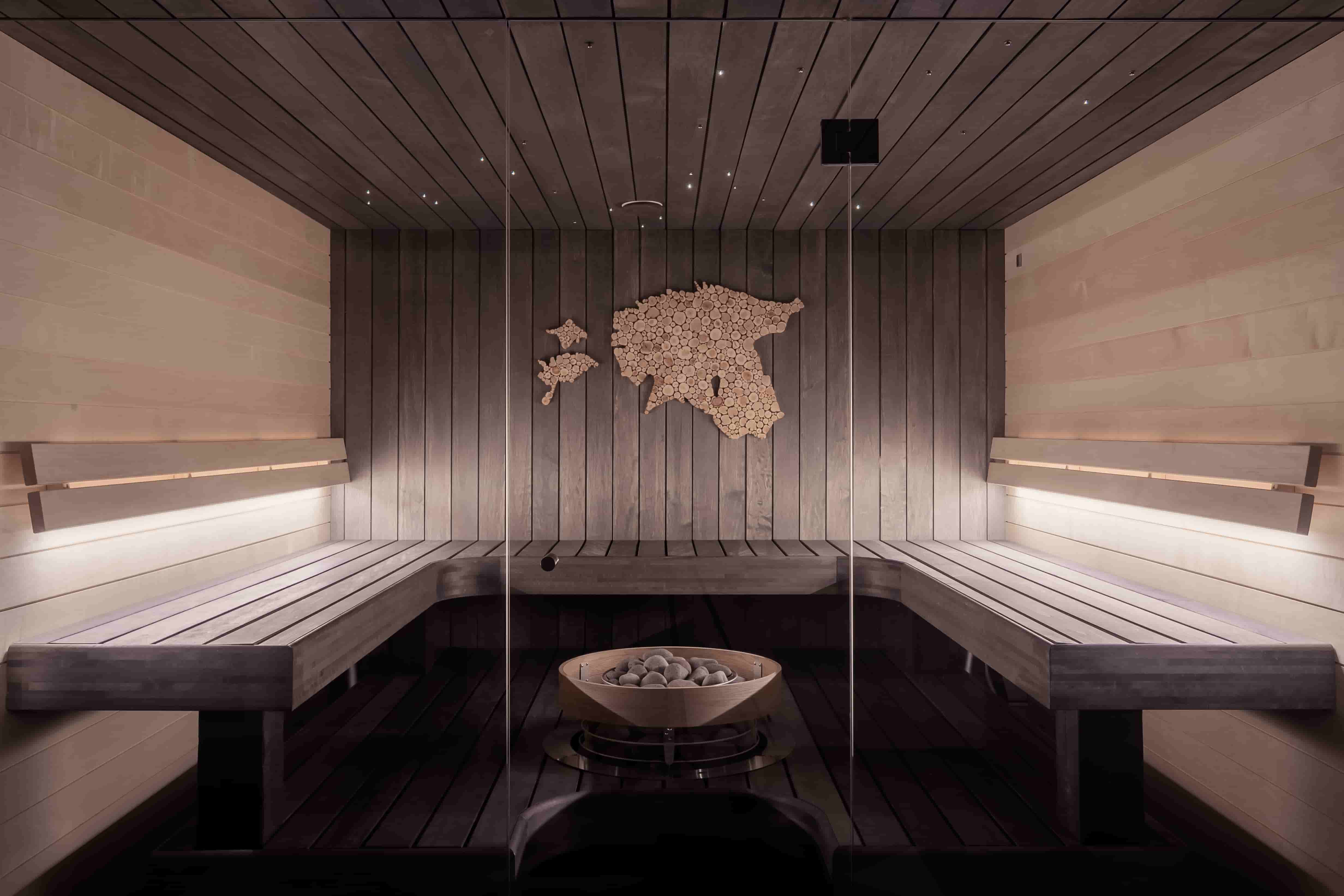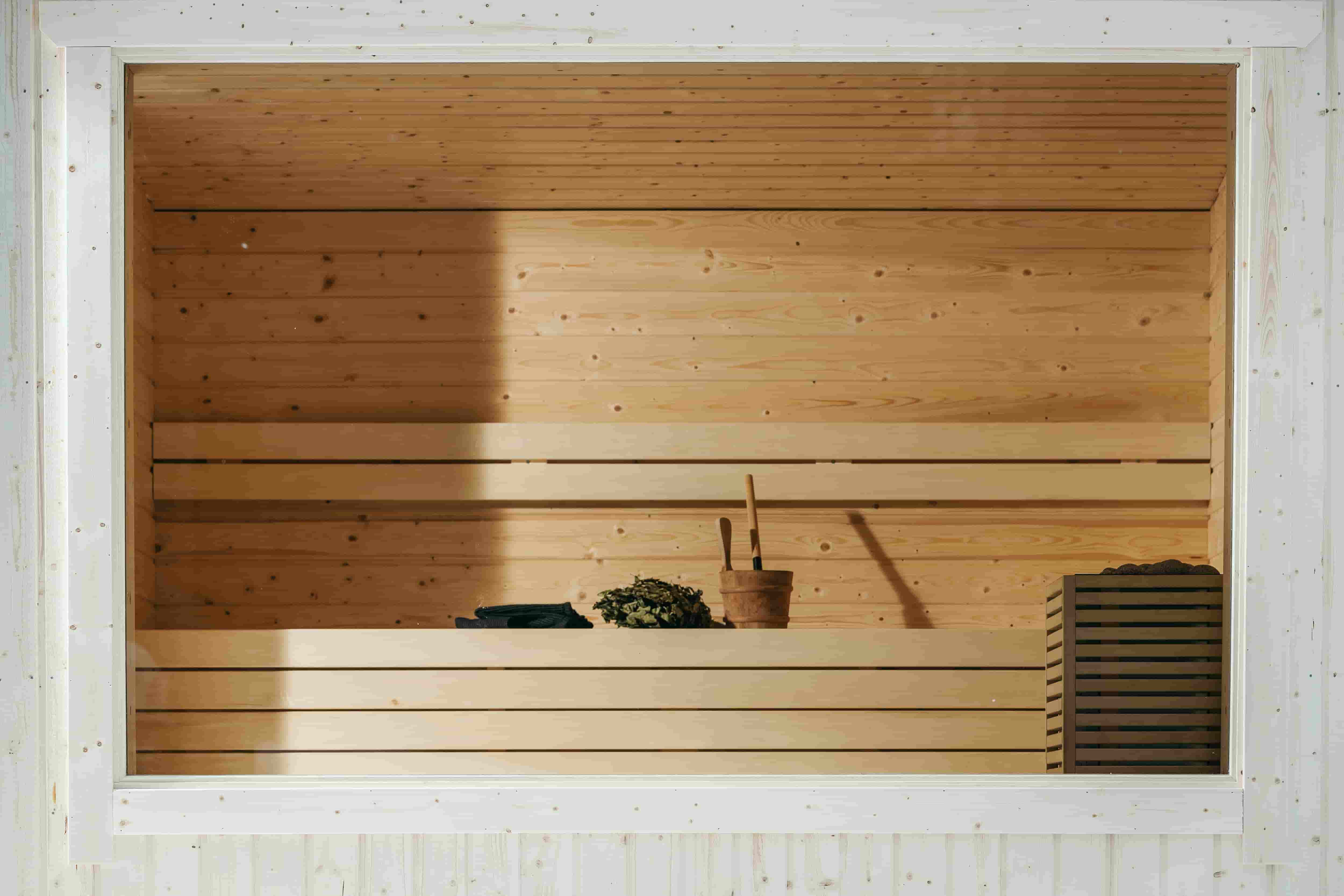
What’s The Difference Between A Traditional Sauna And An Infrared Sauna?
Are you wondering whether you should buy a traditional sauna or an infrared sauna before buying suitable sauna room? Don't worry, you're definitely not alone in this question. So we decided to put together an article to help you understand the difference between the two and buy the sauna that you are most satisfied with. Read on for a brief history of the sauna, its many benefits, and the differences between a traditional sauna and the more modern infrared sauna.
What is a sauna?
A sauna or sudatory, is a small room or building designed as a place to experience dry or wet heat sessions, or an establishment with one or more of these facilities. the term ‘sauna’ has been used to describe any heating system that is meant to cause profuse sweating.It is believed that saunas originated in Finland around 7000bc. Ancient saunas were dug into the ground and lined with stone.The modern sauna is typically a timber-framed room heated by hot stones, wood stoves, or hot embers. These saunas are often found inside or outdoor. A thermometer in a sauna is typically used to measure temperature, a hygrometer can be used to measure levels of humidity or steam. Infrared therapy is often referred to as a type of sauna.
Saunas can take many forms, from traditional steam rooms heated with hot stones to state-of-the-art infrared therapy saunas.In the words of Hippocrates, "Give me a fever and I will cure all diseases." While his statement is a bit exaggerated, it still points to the healing power of a higher body temperature.The modern sauna is equipped with a sound system, Bluetooth functionality and mood lighting. If the color and wood are also diversified, Our Fenlin Sauna Equipment Company ,as a Professional sauna equipment manufacturer,offers poplar, Abachi, sequoia, huanghui, Myanmar red cedar, Canada red cedar, Finnish spruce wood, which are of different colors.

What does a sauna do?
Saunas have healing and relaxing properties since ancient times and have been incorporated into traditional medicine. For thousands of years, people have known that "sauna" is good for the body and mind. Heat brings many health benefits, including stress reduction, increased metabolism, beauty, detoxification, and muscle and joint pain relief. Taking a sauna session after a long day at work is definitely a beneficial experience for the body and mind.
What are the established clinical benefits of infrared and traditional saunas?
Both traditional and infrared saunas can improve cardiovascular disease, rheumatoid disease, and chronic fatigue and pain syndromes. Each will have a positive effect on athletic performance, as the heat of the sauna will force blood into our muscles, which aids in post-exercise recovery. Both will make your skin and hair absolutely glow!
Furthermore, due to its unique heat and humidity arrangement, it has been found that only a traditional sauna can provide additional benefits. These include preventing the risk of developing memory disorders such as dementia and Alzheimer's, reducing the risk of pneumonia, improving arterial stiffness, and reducing the risk of respiratory disease. These are very beneficial medical effects.

What kind of sauna is there?
Saunas can be divided into four categories, including:
Each sauna type offers a unique experience.
For home use, the most common sauna types are traditional sauna and infrared sauna.
Generally speaking, home saunas or home saunas are either custom designed or prefabricated. They can be installed indoors or outdoors. Fenlin can provide a full set of customized services for sauna rooms, including wall board, floor, stool board, explosion-proof lamp, thermometer, wooden bucket and spoon, sauna room, sauna stove and other sauna room accessories.The advantage of prefabricated sauna room is that it is easy to carry, usually cheaper than custom sauna room, easy to buy and install in one or two hours, and there are many styles and sizes to choose from.

What is a traditional sauna?
A traditional sauna is one made of wood that heats a set of sauna stones (modern is done electronically), by applying water to these rocks, creating a heated, humid room in which one can drain Toxins, impurities, etc. A traditional sauna can also be a very bespoke experience, with many creating an environment that best meets their needs. The most common way people do this is to use humidity and temperature, as it's all up to the individual to decide how much water to put on the heated sauna stone or what temperature to heat the water to. Then there are aromatherapy options, as being able to create your own steam means having the option to add different scents and oils.
What is an infrared sauna?
Infrared saunas are log cabins equipped with infrared heaters that can be used to relax, detox and heal the body. Whereas traditional saunas use steam or dry heat to warm the room, as the name suggests, infrared saunas primarily heat your body directly with advanced infrared heaters. Infrared heat increases thermal energy, which creates deep and relaxing sweat in your body. Infrared saunas have well-known benefits for reducing muscle pain, improving sleep, detoxifying the body, as sweating flushes toxins from the body, relieves joint pain and stiffness, reduces stress, improves blood circulation, and improves the condition of our skin and hair. Fenlin offers a wide variety of commercial infrared sauna room, and we will always have you in touch with us.
The difference between a traditional sauna and an infrared sauna
Traditional steam saunas and infrared saunas look similar on the surface.While they can both rejuvenate and relax the body, they have seven important differences that you need to know before you buy one for your home.
Heating Method
The main difference between infrared saunas and traditional saunas is how they generate heat. Traditional saunas have a sauna stove, and the hot air makes the person sitting in the sauna sweat. It consists of a wood-clad room heated by electric heaters filled with rocks. When the rocks are heated, you pour water over them to create steam. The heat from the steam and air in the room surrounds you, warming your body. A feeling of deep relaxation sweeps over you and your muscles, ligaments and joints will fill with blood.
In an infrared sauna, by contrast, the quality of the infrared heat is more important than the air temperature. Because what really heats you in an infrared sauna is the energy wave from the infrared heater, which enters your body and warms you. The infrared sauna takes about 15 minutes to heat up to enter. After entering the sauna, you will start to feel hot. Infrared heat is absorbed into your body, increasing thermal energy and causing you to sweat profusely. This heat can penetrate deep into your ligaments, muscles, nerves - causing blood flow to these areas, allowing important red blood cells (the building blocks of our bodies) to gather and repair our bodies.
Temperature
Saunas that use "hot stones" or steam require an ambient air temperature of about 70 to 80 degrees to produce sweat; however, infrared saunas can keep air temperatures well below 60 degrees while producing higher levels of detox sweat.
Infrared saunas typically have temperatures between 46 and 57 degrees, while traditional saunas can reach up to 85 degrees. The air temperature in an infrared sauna is not the best indicator of how much heat your body absorbs. Your body absorbs the energy waves directly and is directly heated.
Some people are very uncomfortable in the steamy atmosphere of a traditional sauna, and an infrared sauna may be more suitable for these people as it is more bearable. Others prefer the steamy atmosphere of a traditional sauna.
It takes between 30 and 40 minutes for a traditional ‘hot rock’ sauna to heat up. The rocks are heated during this time to the ideal temperature for heat and soft steam.
Heating up an infrared sauna takes between 10 and 15 minutes. Infrared saunas heat the body directly, so you can enter the sauna as soon as the heaters have reached the desired temperature.

Maintenance
A sauna is an investment that should be enjoyed, not maintained.
Generally speaking, saunas are low maintenance, but some require more frequent cleaning.
If low maintenance costs are your priority, we recommend an infrared sauna. Since infrared saunas produce dry heat, the moisture from your own sweat is the only source of moisture, preventing the growth of mold and mildew.
By contrast, a traditional steam sauna is a hot, humid space that promotes the growth of mold and mildew, although it's great for sweating and clearing pores. With traditional saunas, you must always ensure that they are kept clean and maintained to maintain hygiene and safety.
Regardless of the type of sauna, you should only use eco-friendly, non-toxic cleaning products when cleaning your sauna. Never use bleach or other harsh chemicals. Sit on a towel to prevent bacteria or sweat from building up on walls and benches.
In summary
Buying a sauna can seem daunting because there are so many options to choose from. Both traditional and infrared saunas have their pros and cons. But you want a sauna that meets your health and wellness needs, fits the space you have, and fits your budget. Your first priority should be to choose the sauna that works best for you. But if you are still very entangled, it doesn't matter, contact Fenlin, we will customize the most satisfactory sauna room for you according to your needs and preferences



















